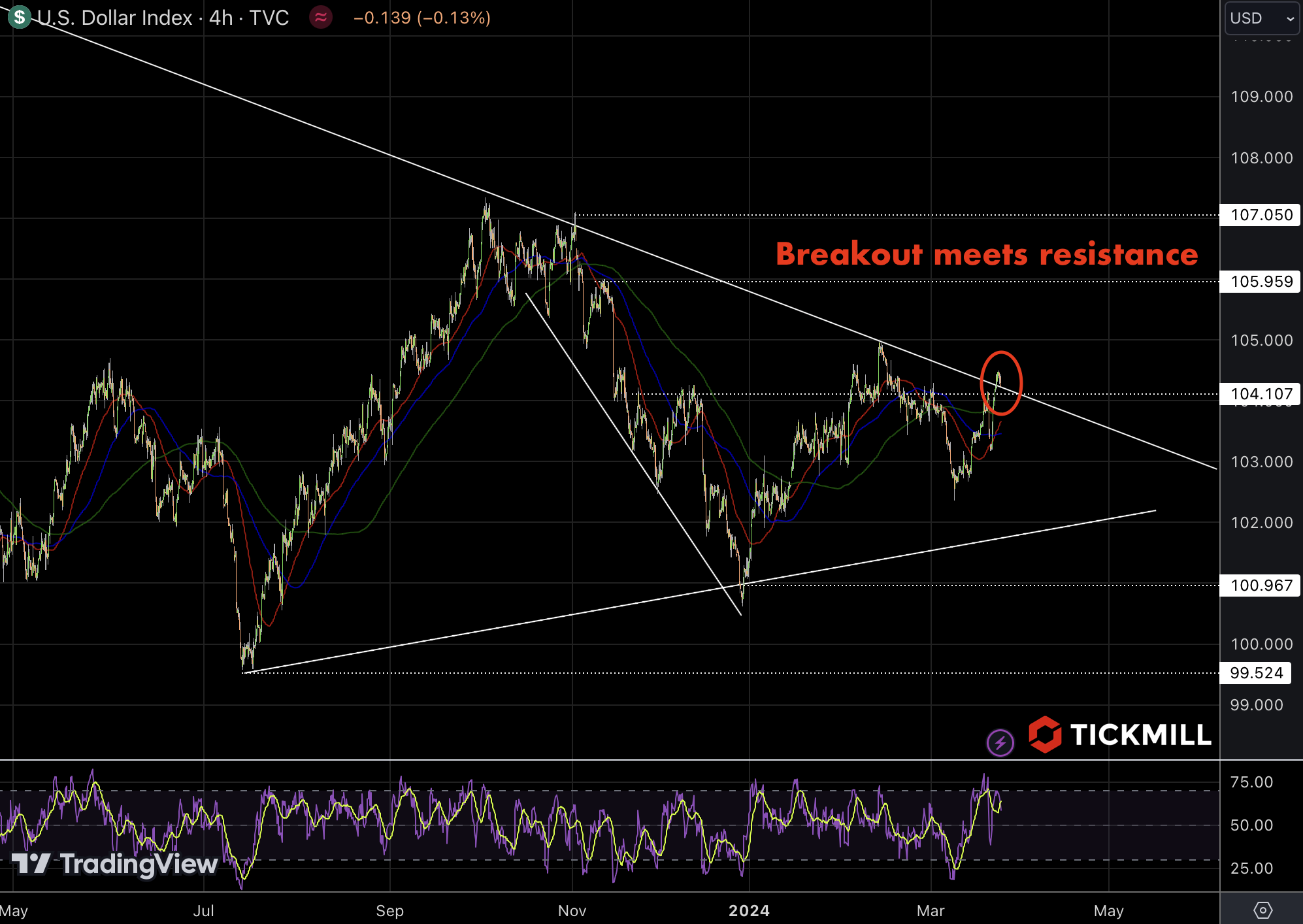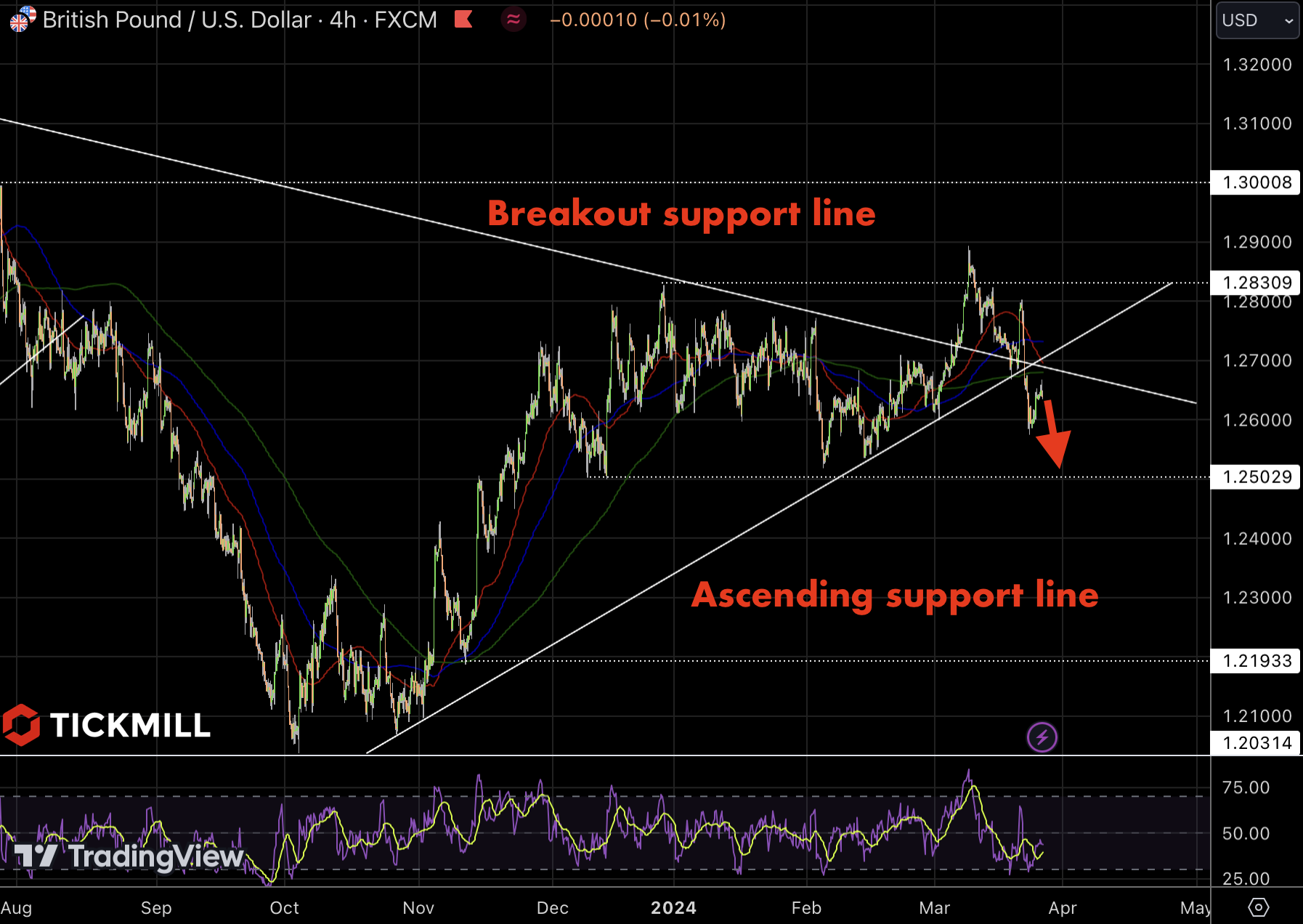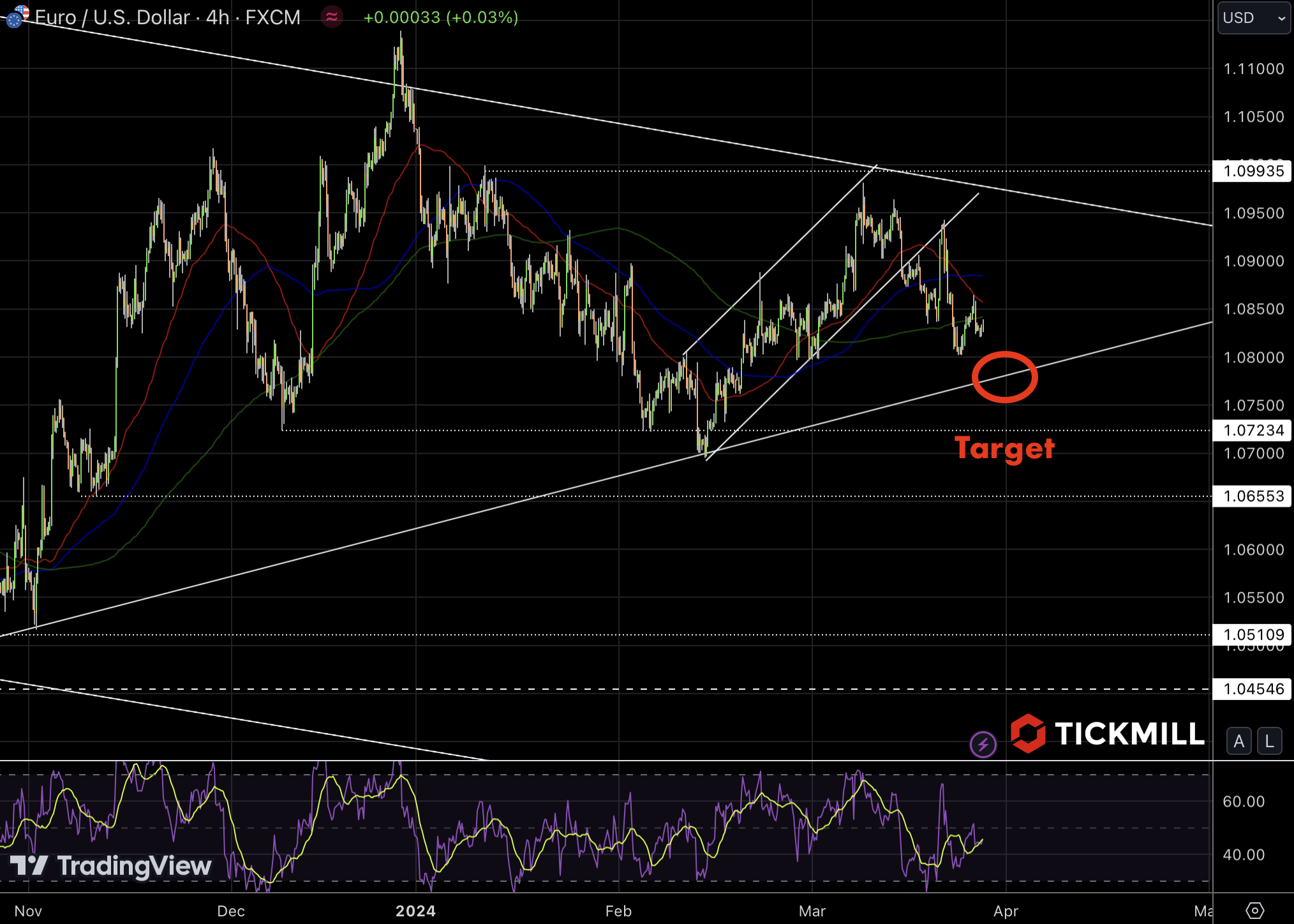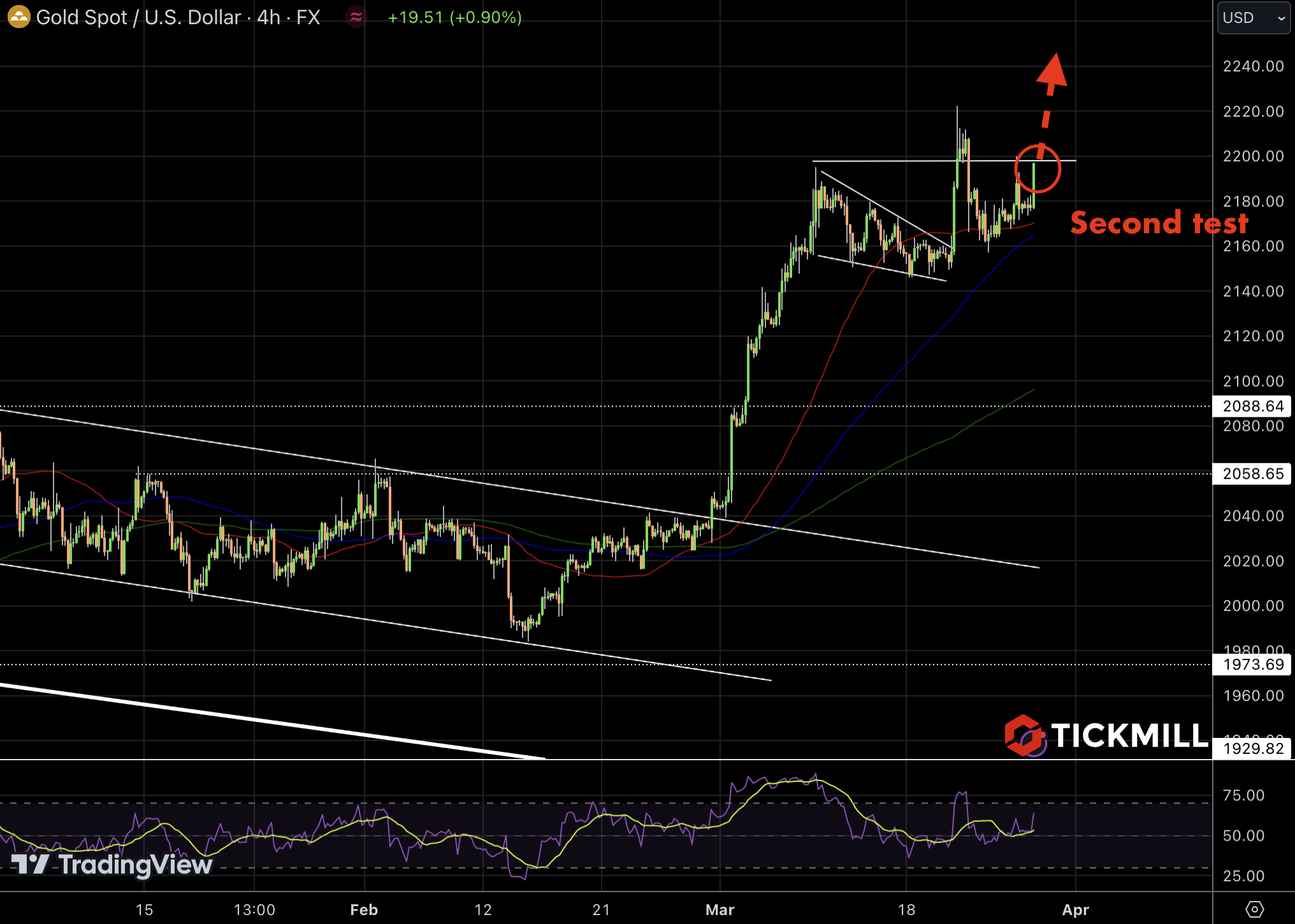tickmill-news
Well-known member
- Messages
- 393
- Likes
- 1
EURUSD remains range-bound as markets look for fresh upside catalysts
EUR/USD advanced slightly on Friday following strong bearish backlash after the pair tested horizontal resistance level on Thursday. Despite the intensive pullback, managed to sustain pricing above 1.08, with technical indicators signaling a lack of significant bearish momentum. The reversal was instigated by a weakening US Dollar fueled by improved risk appetite in the market. However, the US Treasury bond yields' upward trajectory, supported by favorable US data, limited bearish momentum in the greenback, restraining EUR/USD's bullish aspirations.
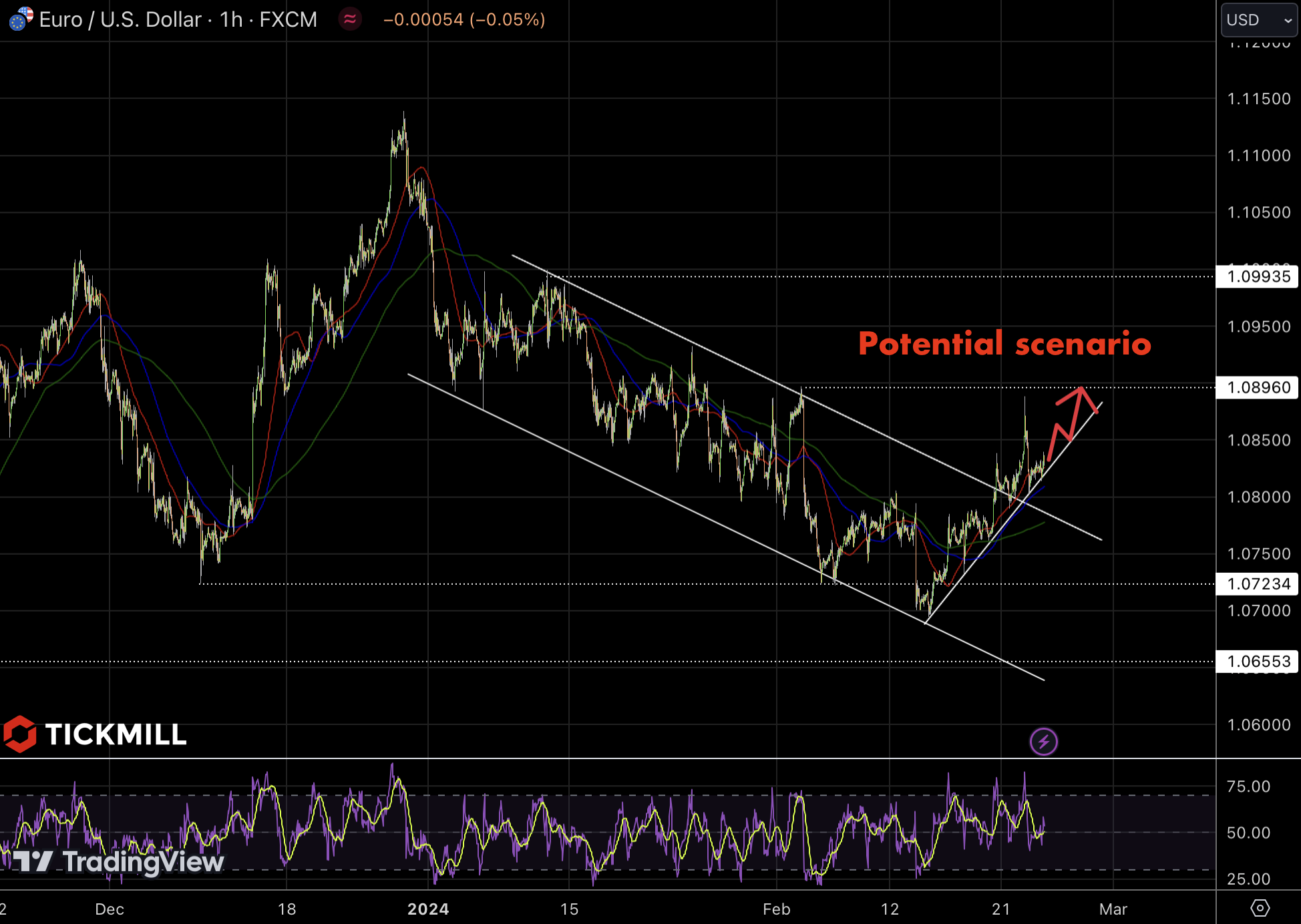
Meanwhile, GBP/USD demonstrated resilience as it surged above 1.2700, marking its highest level in three weeks. The momentum, propelled by robust UK private sector activity, encountered headwinds in the American session on Thursday, leading to a partial retracement. Despite early stability above 1.2650, GBP/USD remains vulnerable to fluctuations, especially in the absence of significant data releases from both the UK and the US.
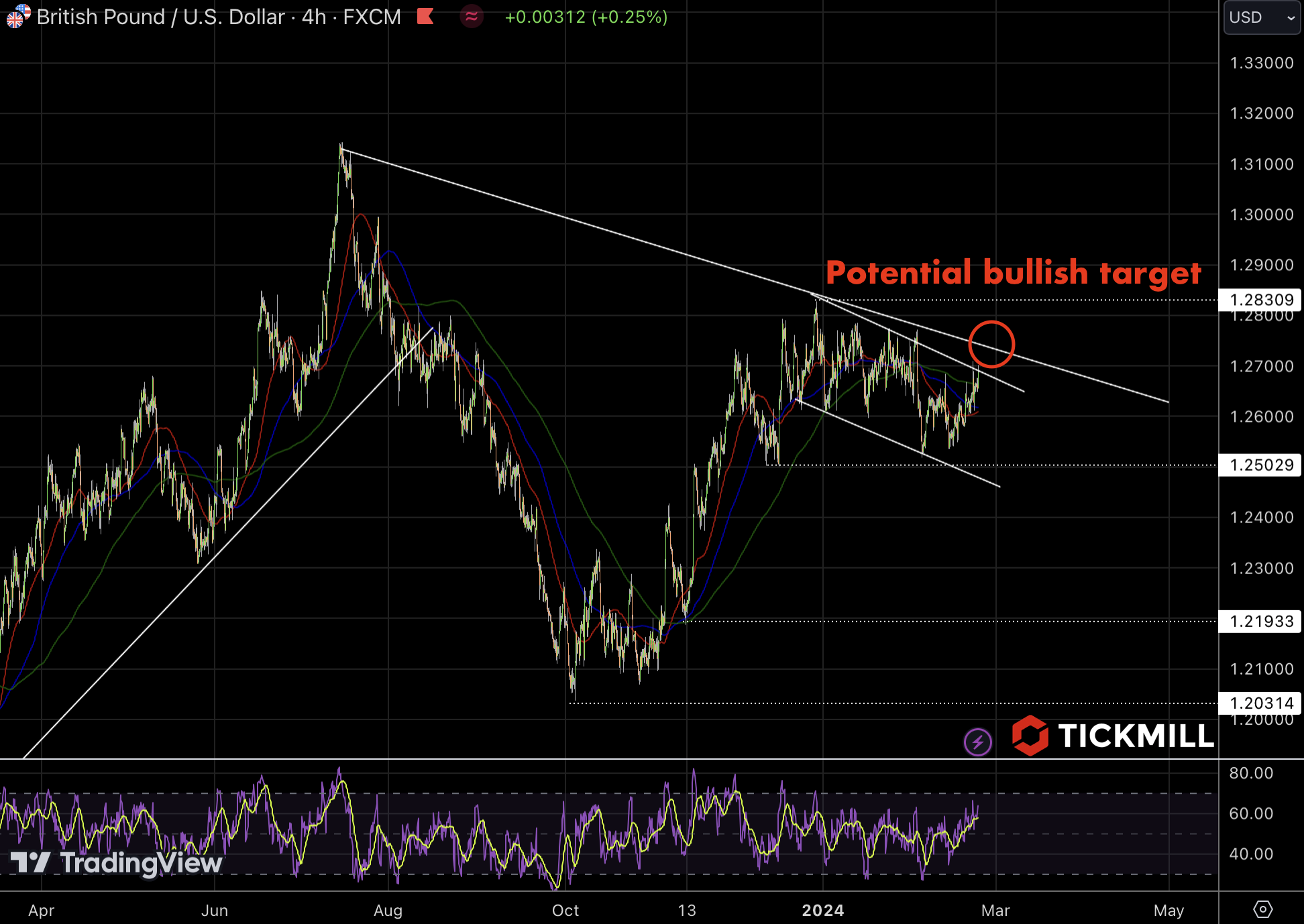
Key economic data releases played a pivotal role in shaping market sentiments. Notably, the decline in first-time jobless claims in the US to its lowest level since early January, coupled with the S&P Global Composite PMI maintaining expansion territory, underscored the resilience of the US economy. Similarly, upbeat PMI data from the UK fueled optimism surrounding the Pound Sterling. However, the surge in the benchmark 10-year US Treasury bond yield to its highest level since late November acted as a catalyst for the US Dollar's resurgence, exerting pressure on GBP/USD's upward trajectory.
Gold prices experienced a retreat from weekly highs, hovering around $2,025 during Friday's London session. The downward pressure stemmed from tempered expectations of imminent rate cuts by the Fed. As Fed policymakers express reservations regarding inflation reaching the coveted 2% target, gold struggles to significantly extend its upside momentum.
The Fed's stance on interest rates, characterized by a preference for maintaining rates within the 5.25%-5.50% range for some time in order to properly assess monetary policy transmission, reflects a cautious approach towards monetary policy. Amidst January's persistent inflation figures, policymakers exhibit a reluctance to hastily implement rate cuts, fearing potential repercussions on consumer price inflation. This cautious demeanor underscores the Fed's commitment to a balanced approach in navigating economic uncertainties.
Gold, often viewed as a safe-haven asset, faces headwinds as the opportunity cost of holding non-yielding assets escalates amidst the Fed's inclination towards prolonging higher interest rates. The diminished prospects of rate cuts diminish the attractiveness of gold as an investment avenue, prompting investors to reassess their portfolios. Consequently, gold prices experience downward pressure amidst the prevailing market sentiment favoring the US Dollar.
Disclaimer: The material provided is for information purposes only and should not be considered as investment advice. The views, information, or opinions expressed in the text belong solely to the author, and not to the author’s employer, organization, committee or other group or individual or company.
High Risk Warning: CFDs are complex instruments and come with a high risk of losing money rapidly due to leverage. 75% and 72% of retail investor accounts lose money when trading CFDs with Tickmill UK Ltd and Tickmill Europe Ltd respectively. You should consider whether you understand how CFDs work and whether you can afford to take the high risk of losing your money.
EUR/USD advanced slightly on Friday following strong bearish backlash after the pair tested horizontal resistance level on Thursday. Despite the intensive pullback, managed to sustain pricing above 1.08, with technical indicators signaling a lack of significant bearish momentum. The reversal was instigated by a weakening US Dollar fueled by improved risk appetite in the market. However, the US Treasury bond yields' upward trajectory, supported by favorable US data, limited bearish momentum in the greenback, restraining EUR/USD's bullish aspirations.

Meanwhile, GBP/USD demonstrated resilience as it surged above 1.2700, marking its highest level in three weeks. The momentum, propelled by robust UK private sector activity, encountered headwinds in the American session on Thursday, leading to a partial retracement. Despite early stability above 1.2650, GBP/USD remains vulnerable to fluctuations, especially in the absence of significant data releases from both the UK and the US.

Key economic data releases played a pivotal role in shaping market sentiments. Notably, the decline in first-time jobless claims in the US to its lowest level since early January, coupled with the S&P Global Composite PMI maintaining expansion territory, underscored the resilience of the US economy. Similarly, upbeat PMI data from the UK fueled optimism surrounding the Pound Sterling. However, the surge in the benchmark 10-year US Treasury bond yield to its highest level since late November acted as a catalyst for the US Dollar's resurgence, exerting pressure on GBP/USD's upward trajectory.
Gold prices experienced a retreat from weekly highs, hovering around $2,025 during Friday's London session. The downward pressure stemmed from tempered expectations of imminent rate cuts by the Fed. As Fed policymakers express reservations regarding inflation reaching the coveted 2% target, gold struggles to significantly extend its upside momentum.
The Fed's stance on interest rates, characterized by a preference for maintaining rates within the 5.25%-5.50% range for some time in order to properly assess monetary policy transmission, reflects a cautious approach towards monetary policy. Amidst January's persistent inflation figures, policymakers exhibit a reluctance to hastily implement rate cuts, fearing potential repercussions on consumer price inflation. This cautious demeanor underscores the Fed's commitment to a balanced approach in navigating economic uncertainties.
Gold, often viewed as a safe-haven asset, faces headwinds as the opportunity cost of holding non-yielding assets escalates amidst the Fed's inclination towards prolonging higher interest rates. The diminished prospects of rate cuts diminish the attractiveness of gold as an investment avenue, prompting investors to reassess their portfolios. Consequently, gold prices experience downward pressure amidst the prevailing market sentiment favoring the US Dollar.
Disclaimer: The material provided is for information purposes only and should not be considered as investment advice. The views, information, or opinions expressed in the text belong solely to the author, and not to the author’s employer, organization, committee or other group or individual or company.
High Risk Warning: CFDs are complex instruments and come with a high risk of losing money rapidly due to leverage. 75% and 72% of retail investor accounts lose money when trading CFDs with Tickmill UK Ltd and Tickmill Europe Ltd respectively. You should consider whether you understand how CFDs work and whether you can afford to take the high risk of losing your money.

